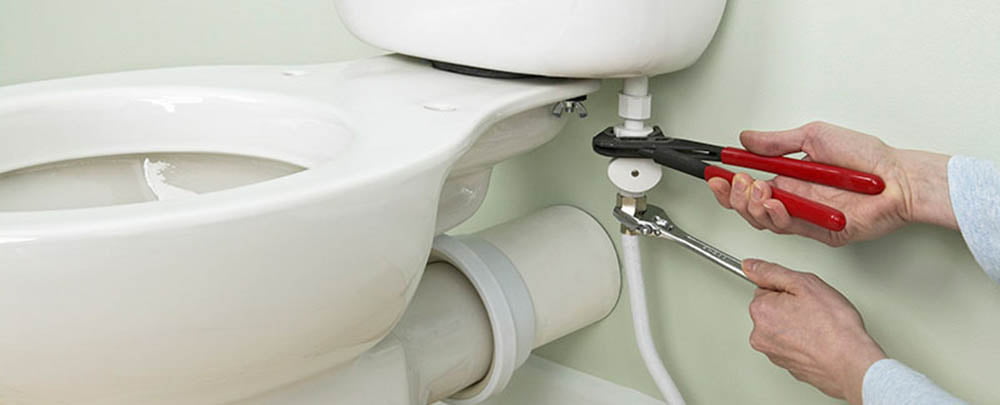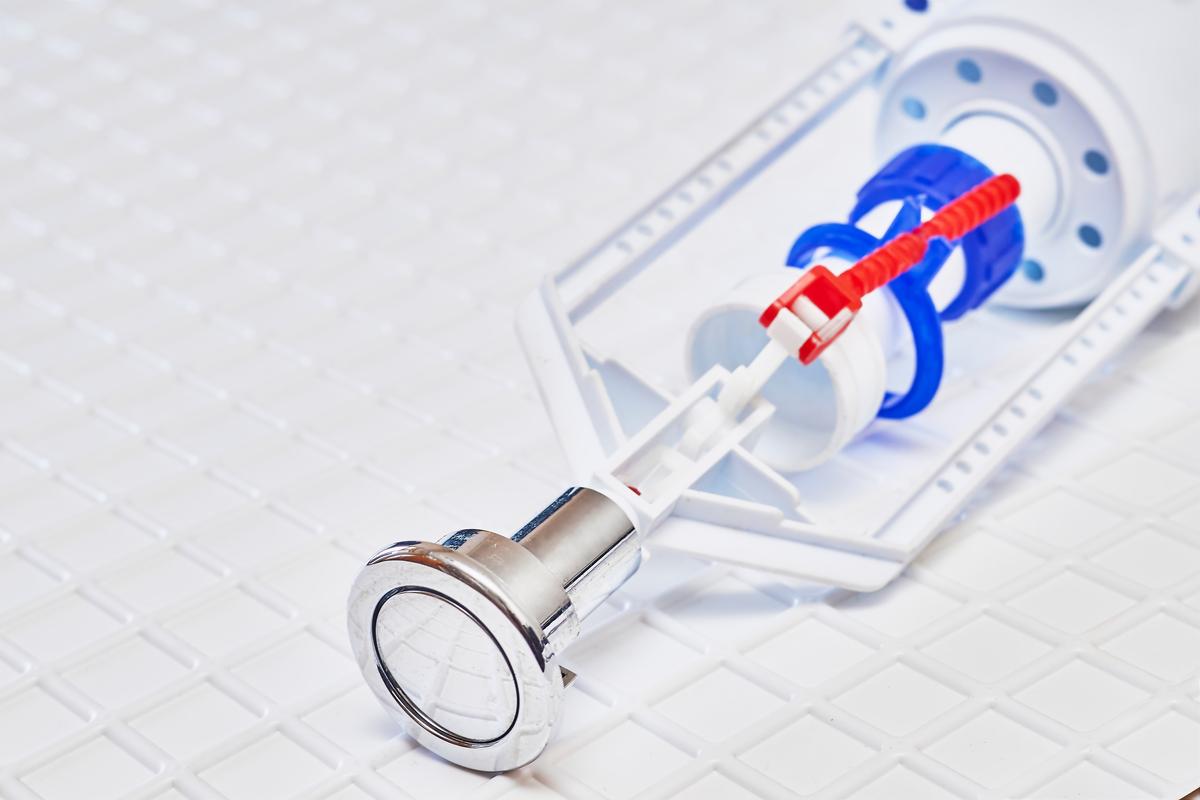One of the most important parts of any toilet is its siphon. Follow us on to check out the toilet siphon:
What is a toilet siphon and what is its use?
The system used in the toilet and its service, like all other technologies that serve modern humans, has improved greatly over time. Today, as hygiene and hygiene are more prominent than ever, the systems used in sanitary ware are even more important.
Check more of our services :
Toilet siphon and uses
The siphon is responsible for drainage and toilet cleaning and generally has a very simple mechanism.
So that after pressing the toilet siphon button or knob, the water stored in the tank is drained by pressure and rotation and directed to the sewer. Then pour some water to prevent the odor from spilling into the toilet bowl.
Different models of toilet siphon
Toilets are available in many different types. Some of these sewage disposal systems differ in depth and shape. Also, the toilet syphon may be the so-called strap. The siphon is used in municipal sewage systems to prevent the penetration of harmful gases and insects into the sewage pipe.
Here are two types of toilet siphons most commonly used:
Wash down Toilet Siphon

This model of siphons is mostly used in European toilets. The way the wash down siphon works is that it uses the pressure of the sealant in the tank to drain the sewage.
Siphonic Toilet Siphon
The system used in this type of siphon drains sewage suction using water pressure and suction. These are U or S-shaped siphons that attach to the toilet bowl on one side and to the sewer on the other.
Common problems related to toilet siphon
The corrosion of the toilet cistern can cause bad odor and create an unpleasant atmosphere in the bathroom. Also, not using the siphon can lead to pipe clogging and sewage buildup, which is why repairing a toilet tank flash and fixing it is so important.
Reservoir Size: If the siphon tank, which is responsible for water storage, does not have adequate volume and is unable to store sufficient water, it may cause problems in the entire sewage discharge process. When buying a toilet cistern, it is best to pay attention to its volume so that you will not need to replace it later.
Screws and Valves: If the siphon valve is not properly opened and closed properly, it may cause problems in the operation of the siphon.
Clogging: Toiletry siphons may become congested over time and may disrupt the function of the siphon and its various components, such as floating. So check this out at regular intervals.
common problems of toilet flapper
The most common problems of toilet flipper are float or float which we will discuss hereafter a brief explanation of toilet float:
Floating duty or flush toilet flush
The task of floating inside the siphon is to adjust the water level inside the tank. In fact, once the water in the tank has reached enough, the vessel orders the water to stop. The float may fail for various reasons and as a result, the siphon tank may not be properly filled. Or, conversely, too much water and overflow.
The most common floating problems include:
Float closing angle: The float should be closed so that the water outlet is perpendicular to the floor of the float tank. If the float is tilted incorrectly, the valve will not close completely.
Incorrect hub: The hub inside the siphon may be pierced after a while and due to the water entering it, it will no longer stay on the water and cause an error in measuring its volume. To solve this problem, simply replace the hub or cover the hole with waterproof glue after draining it.
Regulate or Float Adjustment: Floats have different types, some of which can be adjusted to allow the hub to have more power to push water, thus preventing the toilet syphon from leaking.

Toilet bowl does not work
Another problem with toilets is the repair of a toilet knob or siphon button. Over time the toiletry button may loosen or detach from other components in the tank, so nothing happens every time you press the toilet siphon button and the tank is not drained. So another reason why the toilet isn’t draining maybe its button failure. To fix this problem, you can reconnect the wire or chains attached to the flapper lever to the drip button or lever.
The filling speed of the toilet tank is low:
The second most common toilet problem is a disruption in its tank. Each time you pull the siphon lever, the tanker must be refilled immediately so that it can be used within minutes. But if you find that the tank fills up too late, there may be two problems:
It is possible that the tank’s water supply valve is partially open or that excessive sediment in the mouth of the tank may prevent water from entering the tank at sufficient speed.

Then go to the water filling valve. Water is supposed to enter the tank through this valve, but if it is damaged or deposited, water will not enter the tank quickly enough.
Toilet siphon does not work
If your toilet siphon is not working or the siphon’s water level is low, this may be a sign of clogged pipes. Close the tanker water supply first. This will prevent the water from spilling out of the tank.
Of course, there may be a problem with the siphon knob or button. To do this, carefully try the handle or button not too loose or stiff.
Check the floating lever or rod to see if it is healthy or in need of replacement. If you want to replace this piece, you should take the current piece with you to the grocery store to make sure you buy the right piece.
There may also be problems with the chains attached to the drain valve. Check it and make sure it is attached to the float lever. The chains must, on the other hand, be connected to the drain valve in the bowl. Replace this chain if necessary.
There may also be a problem with the drain valve. You need to make sure that the valve is working properly and opens the valve when you tap the siphon button. If this valve is damaged or damaged, replace it. You can see and examine each of these pieces by removing the door of the siphon tanker.
Understanding Toilet Siphons: How They Work and Their Importance
If you’ve ever wondered how toilets work, one important component you should know about is the toilet siphon. Toilet siphons play a crucial role in the flushing process, ensuring effective waste removal and maintaining a clean and hygienic bathroom environment.
What exactly are toilet siphons? A toilet siphon, also known as a siphon jet, is a mechanism designed to create a powerful vacuum effect when you flush the toilet. This vacuum effect assists in drawing water and waste from the bowl, ensuring that everything is efficiently flushed away.
Toilet Siphons: The Key to Efficient Flushing and Waste Removal
Siphonic toilets are widely used in modern bathrooms due to their superior performance and water-saving capabilities. Unlike traditional gravity-fed toilets, siphonic toilets utilize the power of suction to remove waste effectively. The siphon action created by the toilet siphon increases the velocity of water, leading to a more efficient and thorough flush.
In a siphonic toilet, the toilet siphon is located at the bottom of the toilet bowl, strategically positioned to maximize the flushing power. When you press the flush handle, water is released from the tank, rushing into the bowl and activating the siphon jet. The siphon jet propels the water and waste through the trapway and into the drain pipe, creating a powerful suction force that ensures complete evacuation.
The use of high-quality toilet siphons is essential to ensure reliable and consistent flushing performance. Poorly designed or worn-out siphons may result in weak flushes, clogs, or inefficient waste removal. That’s why it’s important to choose reputable plumbing products that offer durable and efficient siphonic technology.
When it comes to bathroom siphons and plumbing, it’s crucial to understand the importance of proper maintenance and periodic inspections. Over time, siphons can accumulate mineral deposits or debris, which can affect their performance. Regular cleaning and maintenance will help keep your toilet siphons in optimal condition, ensuring their longevity and functionality.
If you’re experiencing issues with your toilet’s flushing power or suspect a problem with the siphon, it’s advisable to consult a professional plumber. They can inspect and diagnose any underlying issues and recommend the appropriate solutions, such as siphon replacement or cleaning.
In conclusion, toilet siphons are integral components of modern plumbing systems, providing the powerful suction needed for efficient waste removal and proper flushing. Understanding how toilet siphons work and their significance in maintaining a clean and functional bathroom is essential for homeowners and businesses alike. Invest in high-quality toilet siphons to ensure reliable and hygienic plumbing performance, and don’t hesitate to seek professional assistance if you encounter any siphon-related concerns.




